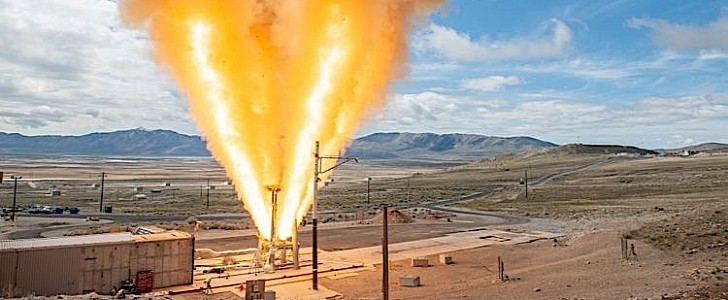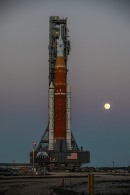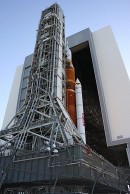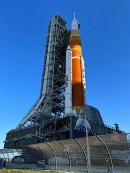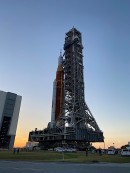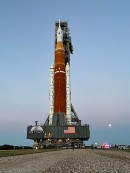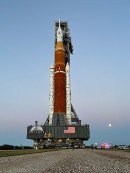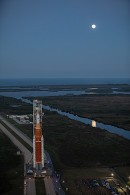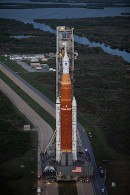All the excitement that surrounded the first major pad test for the Space Launch System (SLS) rocket and the Orion spacecraft has cooled down over the weekend, as NASA scrubbed initial plans for the wet dress rehearsal test on account of a technical glitch.
NASA is planning to have a go at it again on April 4, hoping to be able to fill the rocket’s tanks with fuel and run a countdown to T minus ten seconds, before aborting and draining the tanks.
The SLS-Orion combo presently on the pad at Kennedy is the one meant for Artemis I, the first mission in the new NASA program meant to once again put humans on the Moon. It will depart uncrewed, circle the Moon, and head back, in a bid to validate all the systems.
For all intents and purposes, the SLS-Orion is complete, but that doesn’t mean future iterations of the machines, the ones that will actually carry humans to space, will not be even better and safer, given how they will be carrying humans.
Starting with Artemis II, for instance, the mission that will actually take astronauts around the Moon, the Orion capsule will be fitted with something called LAS. That’s short for Launch Abort System, and it comprises three solid rocket motors that kick in and guide Orion away from danger should a problem occur during launch.
The system is being put together by Northrop Grumman and Lockheed Martin, and at the end of March, the two announced the qualification testing for the Orion LAS is now complete.
That milestone was reached after the final full-scale ground test of the abort motor was conducted. During the run, the motor was inverted, nozzled up, and shot flames toward the sky, for just two seconds, with the power of 400,000 pounds of thrust. This final burn was also meant to validate a new insulation for the hardware.
“This impressive, high-impulse motor burns three times faster than a typical motor of this size, and if needed, the reverse-flow nozzles pull the crew capsule away from the launch vehicle and to safety,” said in a statement Wendy Williams, vice president, propulsion systems, Northrop Grumman.
“Together, the three solid rocket motors of the LAS equip the SLS with the highest human-rated thrust and acceleration safety system possible.”
At the time of writing, there is no word on when Artemis II should be ready for launch.
The SLS-Orion combo presently on the pad at Kennedy is the one meant for Artemis I, the first mission in the new NASA program meant to once again put humans on the Moon. It will depart uncrewed, circle the Moon, and head back, in a bid to validate all the systems.
For all intents and purposes, the SLS-Orion is complete, but that doesn’t mean future iterations of the machines, the ones that will actually carry humans to space, will not be even better and safer, given how they will be carrying humans.
Starting with Artemis II, for instance, the mission that will actually take astronauts around the Moon, the Orion capsule will be fitted with something called LAS. That’s short for Launch Abort System, and it comprises three solid rocket motors that kick in and guide Orion away from danger should a problem occur during launch.
The system is being put together by Northrop Grumman and Lockheed Martin, and at the end of March, the two announced the qualification testing for the Orion LAS is now complete.
That milestone was reached after the final full-scale ground test of the abort motor was conducted. During the run, the motor was inverted, nozzled up, and shot flames toward the sky, for just two seconds, with the power of 400,000 pounds of thrust. This final burn was also meant to validate a new insulation for the hardware.
“This impressive, high-impulse motor burns three times faster than a typical motor of this size, and if needed, the reverse-flow nozzles pull the crew capsule away from the launch vehicle and to safety,” said in a statement Wendy Williams, vice president, propulsion systems, Northrop Grumman.
“Together, the three solid rocket motors of the LAS equip the SLS with the highest human-rated thrust and acceleration safety system possible.”
At the time of writing, there is no word on when Artemis II should be ready for launch.
